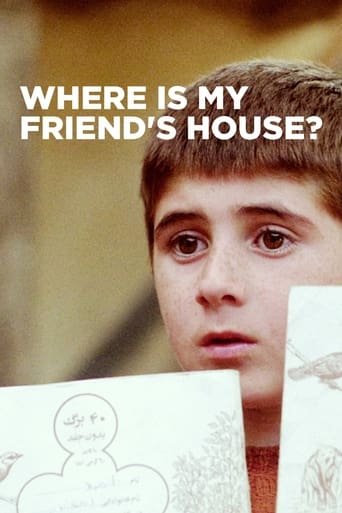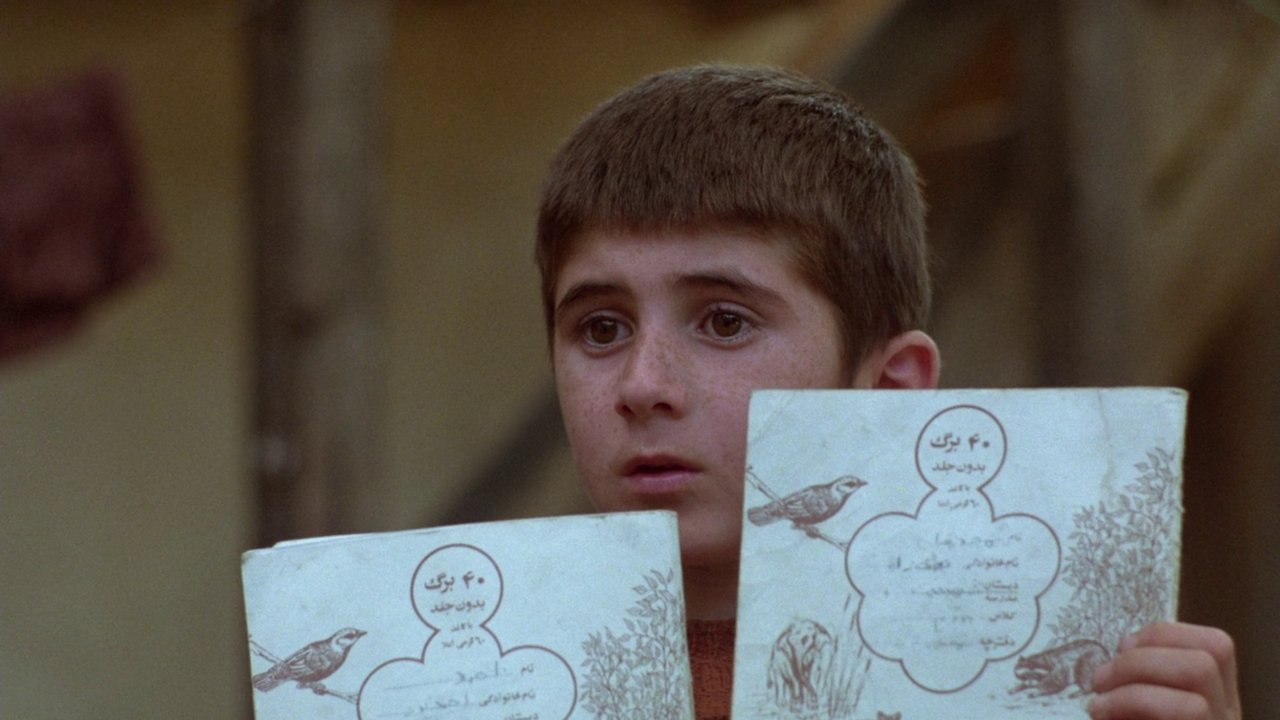Mohammad Mohammadian
This film captures the emotions of a small boy brilliantly. Facing a crisis that (as usual) none of the adults around him seem to appreciate, he sets off on an adventure that would have been of epic proportions if it had been scaled up to compare with the experiences of any grown-up. Is Where Is the Friend's Home simple? Yes, while also very subtle. It operates on multiple levels. This movie is one of the most human movies I have ever seen. The story is quite simple. A little boy keeps forgetting to do his homework in the book and finally he is threatened with dire consequences. His friend has the book and must return it. But the story has so much warmth and is shown with so much beauty that it is impossible not to like the film. The characters that we see throughout the movie are very nicely drawn out. Ahmed's interactions with the old man at the end are so beautiful and filled with emotion that I am brimming with joy just recalling those moments.
avik-basu1889
'Where is the Friend's Home?' was the first film that gave Abbas Kiarostami some critical acclaim and recognition on a global scale. He subsequently went on to become a heavily acclaimed director with his other films that came later. The storyline of 'Where is the Friend's Home?' is very straightforward quite unlike the experimental and abstract nature of Kiarostami's later films. But in spite of the the simple nature of the basic plot, the film becomes deeply profound due to the rich structure of the screenplay and Kiarostami's direction.The film starts with the shot of a door. The door is closed. But we can hear the voices and the shouting of children. That tells us that this door is of a classroom and on the other side of the door are young students. The teacher then opens the door and enters the room. He scolds the children for shouting and making noise. He gives them a lecture about the importance of discipline. While he is giving this lecture, the door of the classroom keeps opening and he keeps closing it repeatedly. In a thematic sense, this opening scene pretty much sums up the whole film. Doors play a big part in the film's thematic core. The door symbolises the lack of freedom that was forced on the Iranian kids at least at the time . Kiarostami clearly thinks that in the name of discipline and the need to grow up as a 'strong' person, the youth of Iran were being forced to grow up prematurely without them properly enjoying their childhood which is a point of time which never comes back. Ahmed, the protagonist in the film gets constantly ignored and talked down to by adults who don't take children seriously. Along with Ahmed, almost all the children in the film are constantly forced by adults to work and do activities that they are clearly too young for. Kiarostami celebrates the inherent innocence and purity that exists in a young child. The characters who respect Ahmed in the film in turn get respectfully treated, and the ones who behave badly with Ahmed are in turn subtly judged by Kiarostami.Other than the celebration of childhood, I felt the film is also a restrained study of the modernisation of Iran. There are references to the fact that people are leaving the villages and flocking to the cities. The door here again becomes a symbol as we are informed that people are gradually starting to reject the old fashioned doors(and windows) and starting to opt for the newer iron-made ones. I guess Kiarostami in a spiritual way is equating the innocence of village life with the innocence of a child.Kiarostami's style of direction here is restrained and not flashy. He doesn't do anything over-the-top, but knows exactly where the camera needs to be pick up a reaction. He uses the music in the most economically brilliant way. The majority of the film is devoid of music, but when it does hit, Kiarostami uses it beautifully to underline a change in mood. The plot itself is very loose and it really is a character driven piece. Kiarostami's restrained directorial style in capturing the life of middle-class village people and the poetic rhythms of this boy Ahmed's journey to do something which he thinks is the right thing to do reminded me a lot of Italian neorealism.The character of Ahmed is adorable, cute and exceptionally admirable. Babek Ahmed Poor has a very cute and likable face. I think Kiarostami does the right thing in not asking Babek to do anything too extraordinary with his face or gestures. He remains dreamy eyed and quietly intense and that actually works for the role of an eight year old.Yes, an argument can be made that once a viewer watches the first scene of the film, he/she will probably get an idea of what the basic driving factor of the plot will be and maybe the general structure of the broad story is somewhat predictable, but if the director/screenwriter can make me so closely engaged with the protagonist of the film, if he can make me care so much about what happens to this boy and whether he succeeds in his act or not and lastly if he can make me cry(yes the film made me cry which is tough to do), then I will gladly forgive some minor glitches in the plot structure. In an age where the theatres get bombarded with superhero films constantly(I don't mind them, but they do feel a bit repetitive due to the preponderance of their releases), it's nice to go back to a film which gives us a different hero. A hero who doesn't wear spandex or a cape, a hero who stands 4 ft tall, a hero who doesn't save millions of people from apocalyptic destruction, but what Ahmed does for his friend and the extents to which he goes just to help him is no less of an act than anything that Superman or Captain America has ever managed.
arash_mnsb
I saw this movie when I was 15 and really enjoyed it at that time because I could find myself instead of the boy playing in the movie. I was older than him, but I felt there was something, let's say, close connection between us. That was the best movie I had ever seen. I learned many things about life and the world around me. Everyone could see simplicity and honesty in his eyes. After 10 years I saw the movie again when I was around 25; and the interesting thing was that I had the same feeling! I didn't know why? But when I look at that precisely I think the story of our life is so simple: When you do good, you feel good and when you do bad you feel bad! Kiarostami visualizes the whole story simply and memorably, it doesn't matter at what age you are watching the movie, just you can feel it, touch it and live it!
aled-6
This child, a boy of about 8, takes a friend's homework book home in error and fearful that his mistake will prevent another boy from doing his homework which will result in his pal's expulsion from school and thus the loss of a friendship tries to return the book. First however and this is only the first of the many problems he encounters he must persuade busy parents who will not listen to allow him to leave the house and return the book. He sneaks off and then although he has only a vague idea of where his friend lives attempts to find the house which is in another village some distance away. The journey is long and night is falling; he meets mostly uncooperative adults on the way. I was amazed at determination of this very serious young boy to prevent the expulsion of the friend. You will gain good incites from this movie into the lifestyles of both adults and children in a rural part of Iran where the nature of the terrain makes travel difficult. He doesn't find the house but does succeed in solving the problem in his own unique way. If you like movies about kids you will enjoy this one.


 AD
AD

